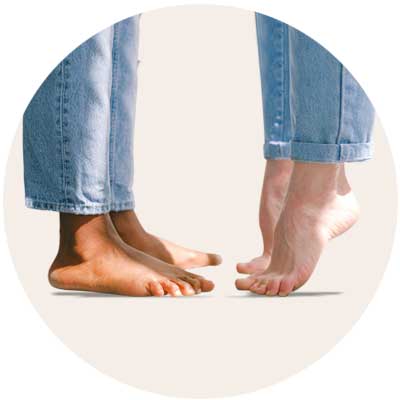
What is dry skin on the legs?
Dry skin of the legs is an increasingly common problem. Difficulty in blood circulation to the legs can be one of the key causes of dry skin in this area due to, in part, its distance from the heart.
What does dry skin on the legs look like?
Dry skin makes skin feel rough and can cause cracking or flaking. The skin sheds cells constantly, but this process is usually invisible because the individual plaques of skin from the stratum corneum are far too small to be seen. However, skin flaking on the legs often results in visible, silvery-white flakes shedding. In severe cases of dry skin, the stratum corneum can crack causing redness, itching and burning.
How to treat dry skin on the legs
As an alternative to harsh, foaming cleansers and gels, wash with the gentle, non-foaming Eudermic Cleansing Base.
After thoroughly drying the skin, apply Emollient Cream in the morning and evening, and massage well.
Apply Nourishing Cream in the morning and massage well. In the evening, apply Extreme Emollient Ointment. Once the dryness has improved, return to using Nourishing Cream in the evenings.
To avoid dry skin, is it necessary to drink a lot of water?
Drinking a lot of water does not necessarily mean hydrated, moisturized skin. The human body is made up of 75% water, so it’s not something the skin is lacking. Drinking more water than the body needs can actually put a strain on the organs responsible for urine production and collection. The immediate result is a continuous need to urinate. In the longer run, drinking excess water also causes water retention, especially on the abdomen, thighs and buttocks. The swelling caused by water retention can cause edema, or the accumulation of fluid in the interstitial spaces of the body. This can contribute to or worsen cellulite (panniculitis adiposa).












